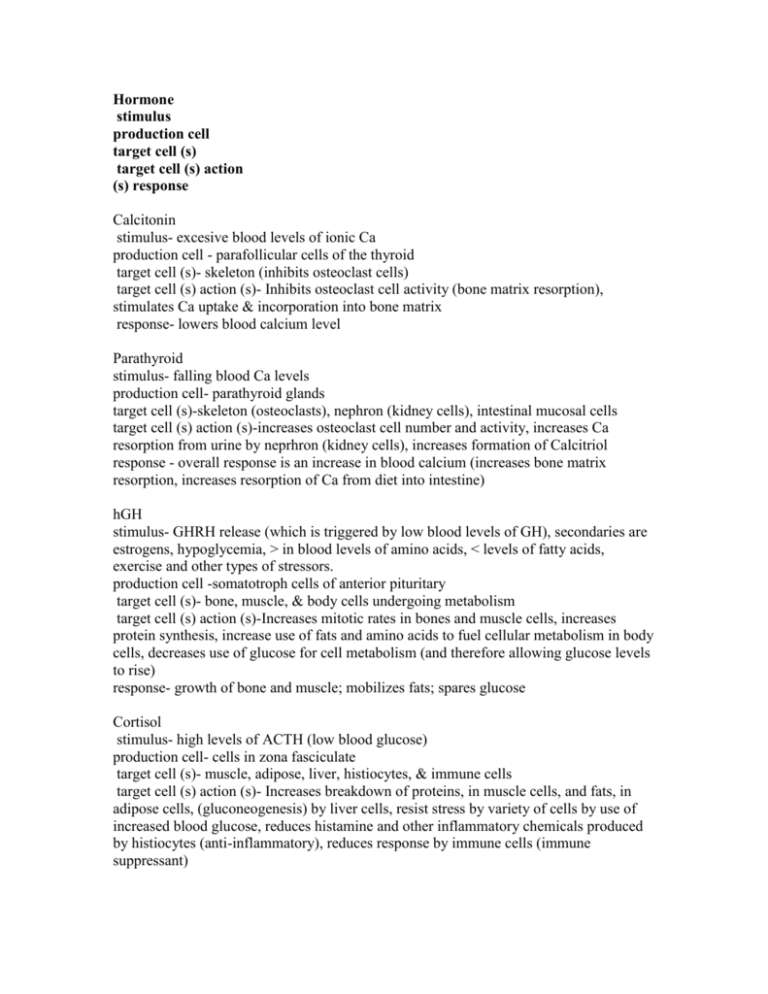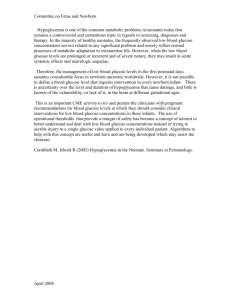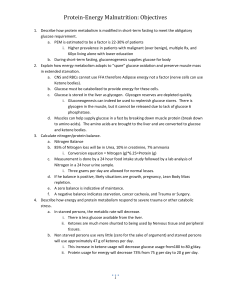endocrine activity hormones
advertisement

Hormone stimulus production cell target cell (s) target cell (s) action (s) response Calcitonin stimulus- excesive blood levels of ionic Ca production cell - parafollicular cells of the thyroid target cell (s)- skeleton (inhibits osteoclast cells) target cell (s) action (s)- Inhibits osteoclast cell activity (bone matrix resorption), stimulates Ca uptake & incorporation into bone matrix response- lowers blood calcium level Parathyroid stimulus- falling blood Ca levels production cell- parathyroid glands target cell (s)-skeleton (osteoclasts), nephron (kidney cells), intestinal mucosal cells target cell (s) action (s)-increases osteoclast cell number and activity, increases Ca resorption from urine by neprhron (kidney cells), increases formation of Calcitriol response - overall response is an increase in blood calcium (increases bone matrix resorption, increases resorption of Ca from diet into intestine) hGH stimulus- GHRH release (which is triggered by low blood levels of GH), secondaries are estrogens, hypoglycemia, > in blood levels of amino acids, < levels of fatty acids, exercise and other types of stressors. production cell -somatotroph cells of anterior pituritary target cell (s)- bone, muscle, & body cells undergoing metabolism target cell (s) action (s)-Increases mitotic rates in bones and muscle cells, increases protein synthesis, increase use of fats and amino acids to fuel cellular metabolism in body cells, decreases use of glucose for cell metabolism (and therefore allowing glucose levels to rise) response- growth of bone and muscle; mobilizes fats; spares glucose Cortisol stimulus- high levels of ACTH (low blood glucose) production cell- cells in zona fasciculate target cell (s)- muscle, adipose, liver, histiocytes, & immune cells target cell (s) action (s)- Increases breakdown of proteins, in muscle cells, and fats, in adipose cells, (gluconeogenesis) by liver cells, resist stress by variety of cells by use of increased blood glucose, reduces histamine and other inflammatory chemicals produced by histiocytes (anti-inflammatory), reduces response by immune cells (immune suppressant) response- stimulates conversion of proteins to carbohydrates, raises blood sugar levels and promotes glycogen storage in the liver (see above). Thyroxine stimulus- high levels of TSH (low blood glucose) production cell -thyroid follicular cells target cell (s)- all body cells (enzymes concerned with glucose oxidation) except adult brain, spleen, testes, uterus, and thyroid target cell (s) action (s)- Increase use of oxygen and glucose to elevate cell metabolism of all body cells, increase protein synthesis to promote normal growth of muscle and nervous tissue increase use of fats for cellular metabolism thereby sparing glucose, increase contraction of smooth muscle cells in arterioles and cardiac muscle response- increased basal metabolism and body temperature; normal growth of muscle and nervous tissue, increased blood glucose levels, >bp, > heart rate Glucagon stimulus- low levels of blood glucose and increased sympathetic activity production cell- alpha cells in Isle of Langerhans target cell (s)- liver cells target cell (s) action (s)- Increases blood glucose levels increasing glycogenolysis in liver, increases gluconeogenesis response -synthesis of glucose Insulin stimulus-high levels of blood glucose production cell- beta cells in Isle of Langerhans target cell (s)- body cells which take in glucose, liver cells, adipose cells Target cell (s) Action (s)- Increase glucose uptake into body cells, increase Amino acids intake, increase glycogenesis (convert glucose to glycogen), increase lipogenesis response-decreased blood glucose levels Epinephrine/Norepinephrine stimulus- high levels of sympathetic nervous stimulation production cell- chromaffin cells in adrenal medula target cell (s)- sympathetic nervous system is mobilized to produce effects on liver cells, smooth muscle cells in bronchioles, smooth muscle cells in arterioles, heart muscle cells target cell (s) action (s)- increase contraction of cardiac muscles (increased heart rate), alter blood flow to brain, heart, lungs, increase glucose release (glycogenolysis), increased bronchodilation. response- produces flight or fight response ADH stimulus- increased osmolarity of blood or < blood volume, also pain, some drugs, low bp. production cell -neurosecretory cells in hypothalamus target cell (s)- nephrons, smooth muscle cells in arterioles target cell (s) action (s)- Increases retention of water by nephrons (kidney cells), increases vasoconstriction of smooth muscle cells in arterioles response- inhibits urine formation (but > water and blood volume), increases blood pressure under extreme conditions Aldosterone stimulus- high levels of blood K, production stimulated by low levels of blood Na , dehydration or blood loss (reduced blood volume) which triggers eventual production of Angiotensin II, a urinary hormone that stimulates Aldosterone production. production cell- cells in the zona glomerulosa target cell (s)- kidneys (nephron cells) target cell (s) action (s)- Increases kidney (nephron cells) retention of Na+ (Cl- and water follows osmotic gradient produced by Na +), increases secretion of K+ out of body, by nephron cells, increases secretion of H+ out of the body, by nephron cells. response- increase in Na blood levels, decreased K blood levels and increased blood volume




